During 2021, Daniel Joyce and I visited Titanite Hill, as it is popularly known, on Gibson Road East, near Tory Hill. Early in the year, right after the snow melted, Daniel went, by himself, before the black flies were out, and located a spot with good titanite crystals and excellent potential for more. So we returned several times right into the fall. We ended up with some very nice titanite crystal specimens. The titanite crystals occur with microcline, amphibole and fluorapatite but those crystals tend to be very poorly formed and mostly serve as matrix for the titanite crystals.
Titanite hill is a steep slope on the north side of Gibson Road east. People have been going there for generations to find very good mineral specimens. As I understand it, the land is owned by a defunct crown corporation and the land has been withdrawn from staking. This makes it sort of similar to Crown Land and open access to rockhounds and mineral collectors. It is a great place for collectors of all levels. Many families go there for a morning or afternoon to try their luck digging or scrounging mineral crystals.
Recently, a local logging company did some selective logging around the base of Titanite Hill but did not disturb the slope where crystals are found. As well, the logging company cleared off a flat area to sort, store and load logs onto their trucks and that area now serves as a wonderful parking area!
The collectable crystals at this locality result from the presence of calcite vein-dykes. In many places, the calcite has naturally weathered away releasing mineral crystals into the soil. You just need to find a spot where calcite has dissolved away and dig out crystals out of the mud, dirt, rocks and roots! Easy!
Here are some photo's and captions that serve to share our collecting experiences and results with you.
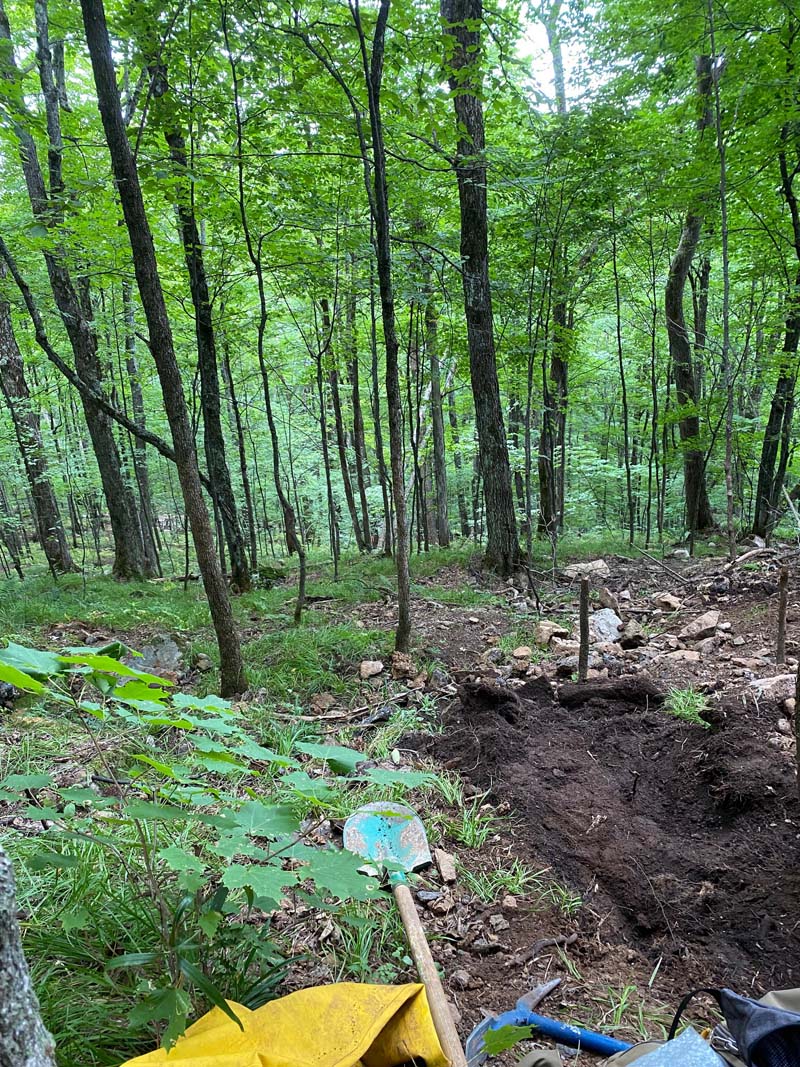
Titanite Hill is in a mixed hardwood forest, mostly maple, oak and beech with a few coniferous trees here and there. This photo shows a typical calcite vein-dyke excavation. Doesn't look like it, in the photo, but it is pretty steep!
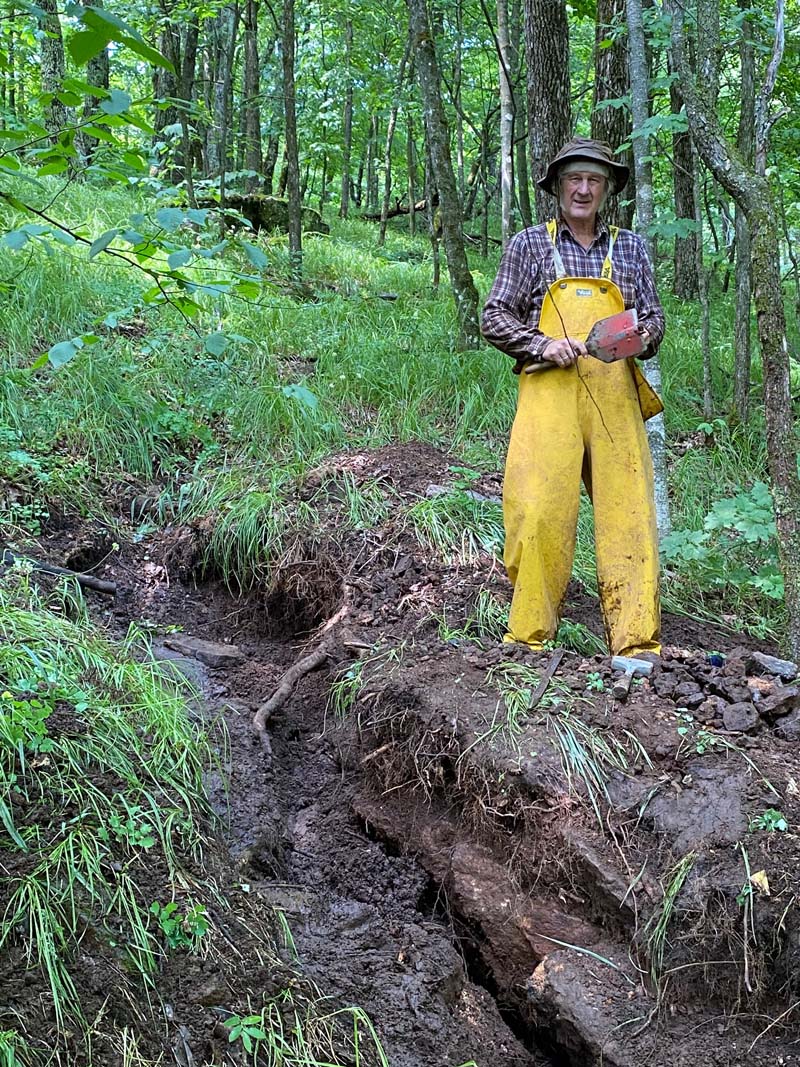
This is me, David K. Joyce, opening my folding shovel, beside the weathered calcite vein-dyke, that we excavated through the year. It declines at an angle of about 45 degrees under where I am standing. It was dissolved only to a depth of about a maximum of one metre or so at this point.
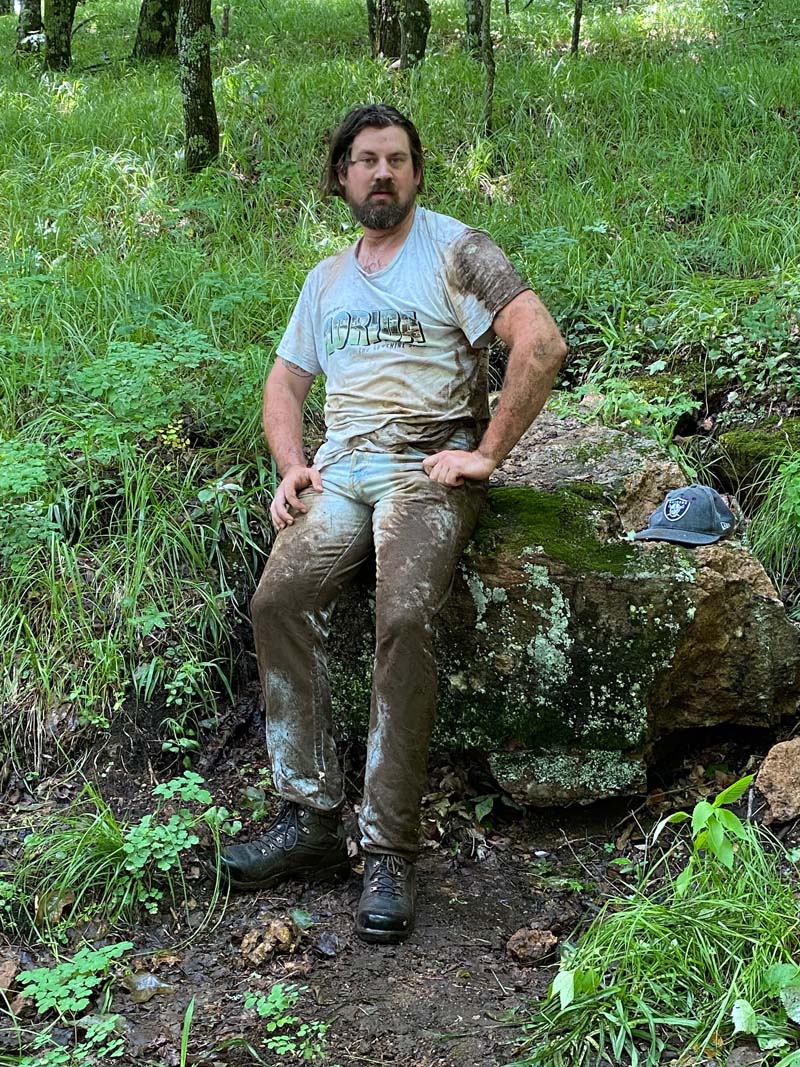
The spot we were working also happened to be the channel for much of the water flowing down the hill, in this area, so it ended up being VERY muddy digging. Most times we had only a clue about what a specimen might look like. As a result, we took any likely looking chunks home for a good scrubbing before we discarded any!
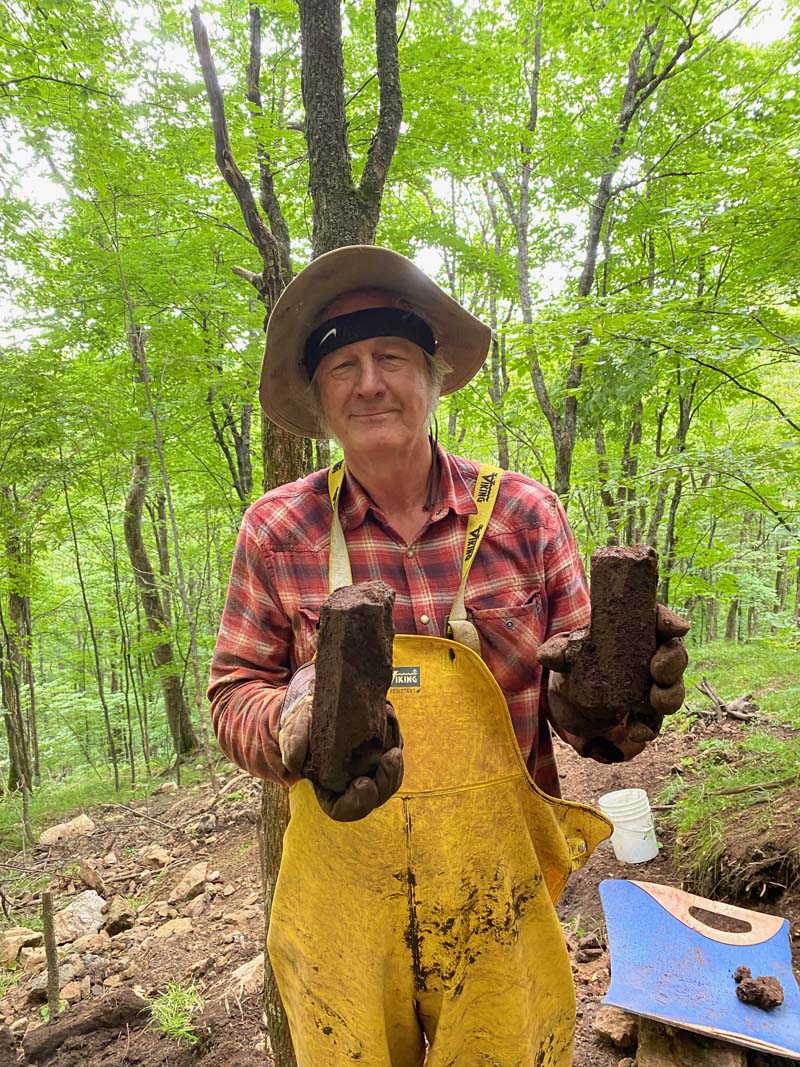
We found LOADS of crystals! Trouble is most of them only looked good when they were coated in mud. These large amphiboles were no exception. They looked great when encrusted with mud and gunk but after they were cleaned off, they really were not very good. They were BIG, though!! 🙂
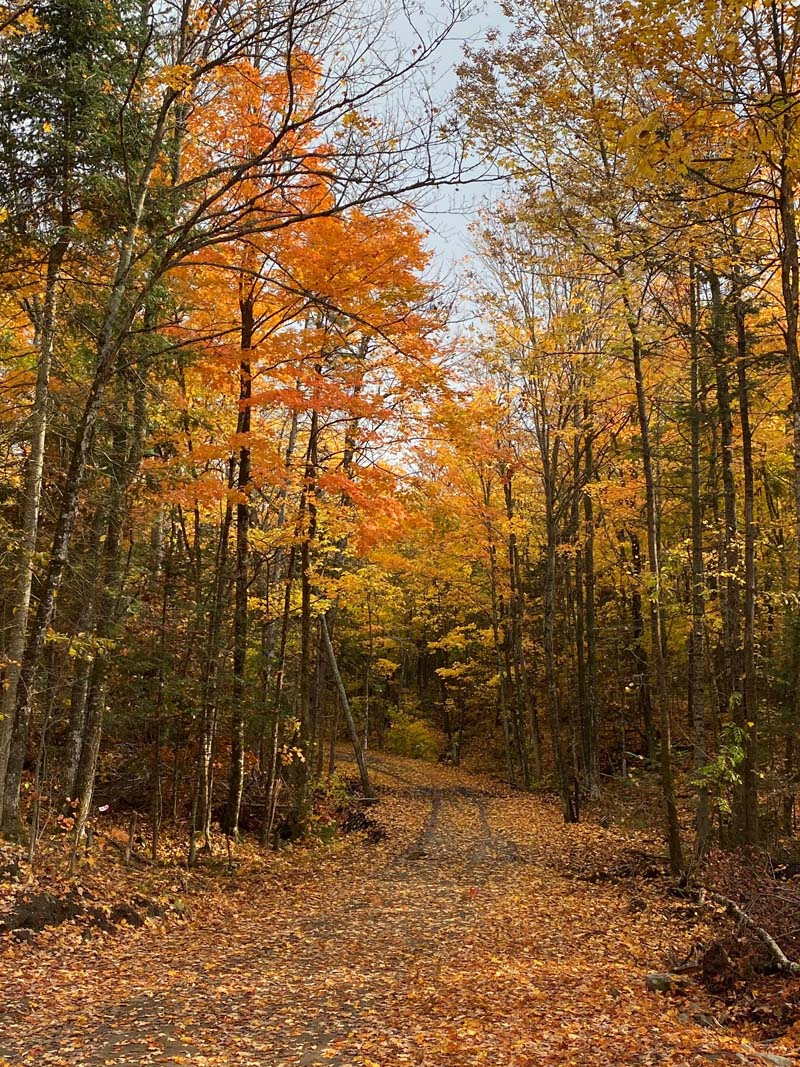
Gibson Road is a real "backroad" barely drivable by regular cars. It is pretty, though! Particularly in the Fall!

Daniel found a new kind of tool online. They are gloves that have plastic claws on the end that he found very good for digging in the weathered calcite vein dyke! Here he is in action with them.

This is the, now empty, log sorting and storage area that serves as a very good parking area for people visiting Titanite Hill. Very spacious compared to what was there before!
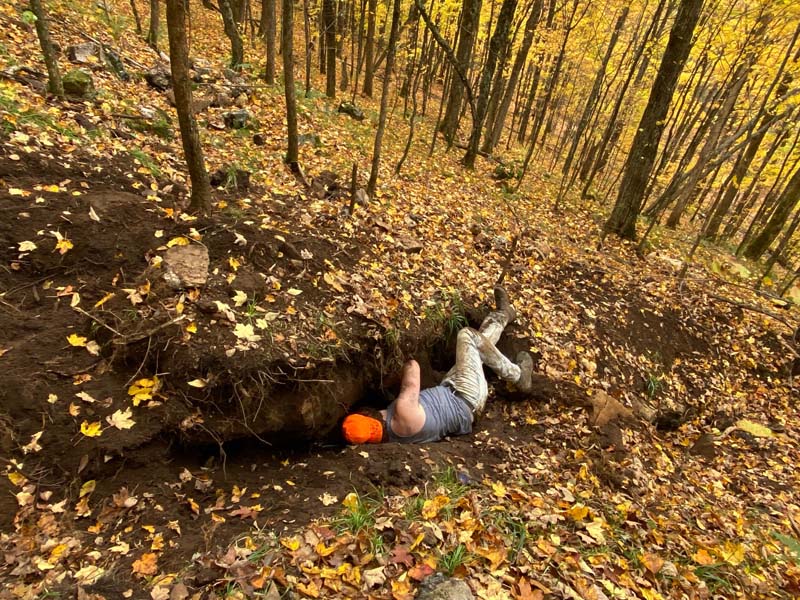
This is one of the common positions that one has to adopt to collect in a weathered calcite vein dyke. Daniel pulled a few good ones out of there.
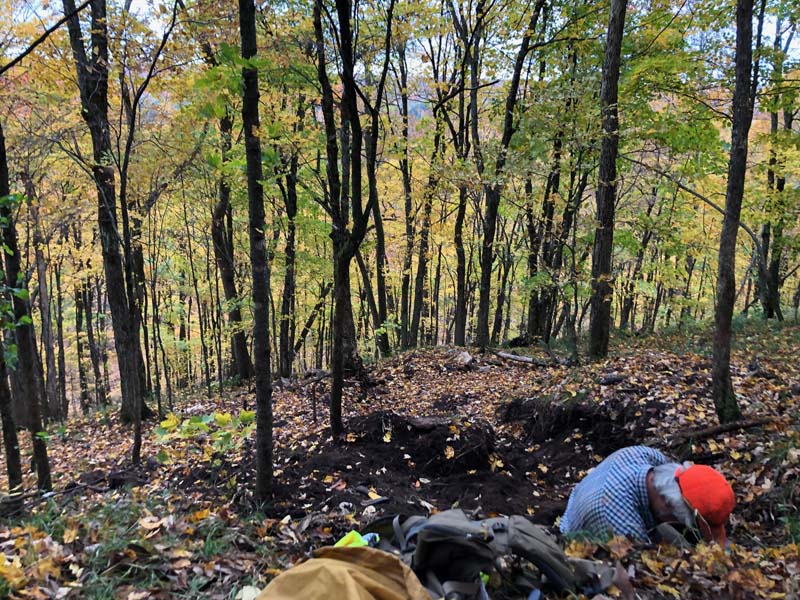
Here is yours truly a little higher up in the calcite vein-dyke system than Daniel was in the previous photo.
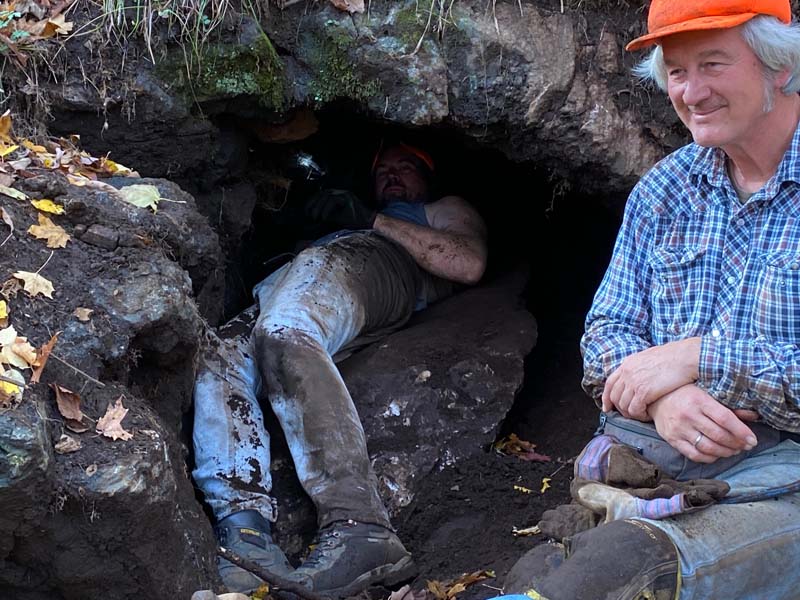
This hole had been excavated by someone else but we did find a couple of small apatite crystals left behind.

Don't look like much, do they? All of the ones that appeared to host good crystals were taken home and cleaned. We threw a lot away afterwards.

We had "done a lot of damage" this particular day and you can see all of our dirty specimens on top of the area that we had been digging.
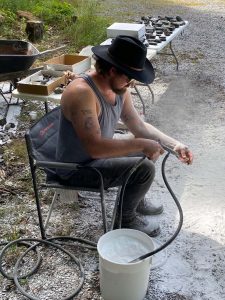
The titanite crystals tend to be encrusted with iron oxides, grunge and silica and don't always respond well to acid or "Iron Out" treatments. As well, they tend to be delicate and sometimes can break with aggressive scrubbing. One of the best ways to clean them gently is air abrasive using sodium bicarbonate. Here is Daniel cleaning a titanite specimen, thanks to the generous access to Ray McDougall's air abrasive unit.
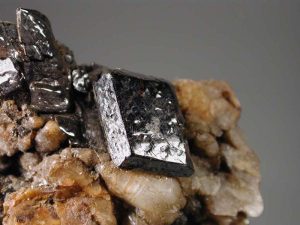
This specimen shows a sharp, thick titanite crystal on microcline. The titanite crystal is just 15mm across but a nice one!

This perky 15mm titanite crystal sits up perfectly on crude microcline crystals. Specimen is about 5.0cm across.
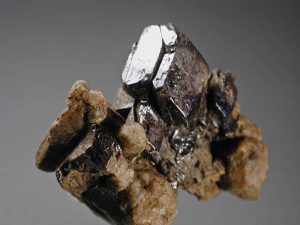
Daniel chiseled this one off of the wall rock, in the mud. The next photo shows it after cleaning.

Here is the muddy titanite specimen after it had been cleaned and soda blasted. Nice!
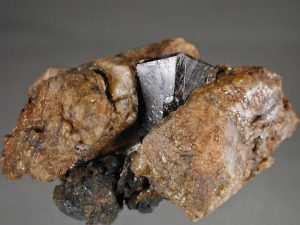
Love the way this sharp, titanite crystal poke up through the microcline crystals. The specimen is 7.5cm across.
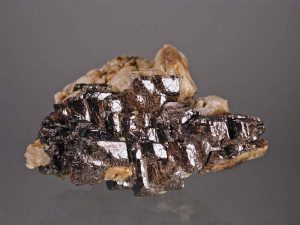
This 7.2cm across specimen is actually one titanite crystal showing parallel growth! The photo does not do it justice, it is pretty cool!
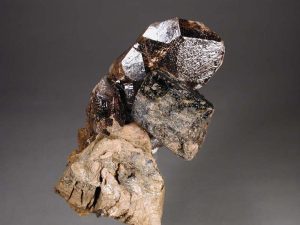
This is one of the better specimens that we found. Interestingly it shows a very large titanite crystal attached to an amphibole crystal and a microcline crystal. The titanite crystal covers the entire back of the piece but it is fairly corrode in places. The xposed part is great! 13.0cm tall.

This is one of my favourites! It is a fairly good microcline cluster with a very sharp, blocky, lustrous 27mm titanite crystal in the middle. There are also quite a few more smaller titanite crystals scattered here and there amongst the feldspars. Specimen is 12.5cm across.